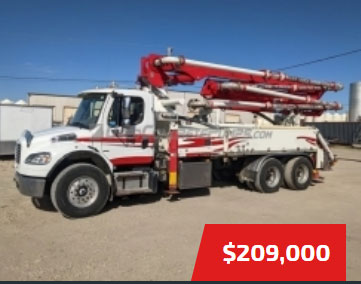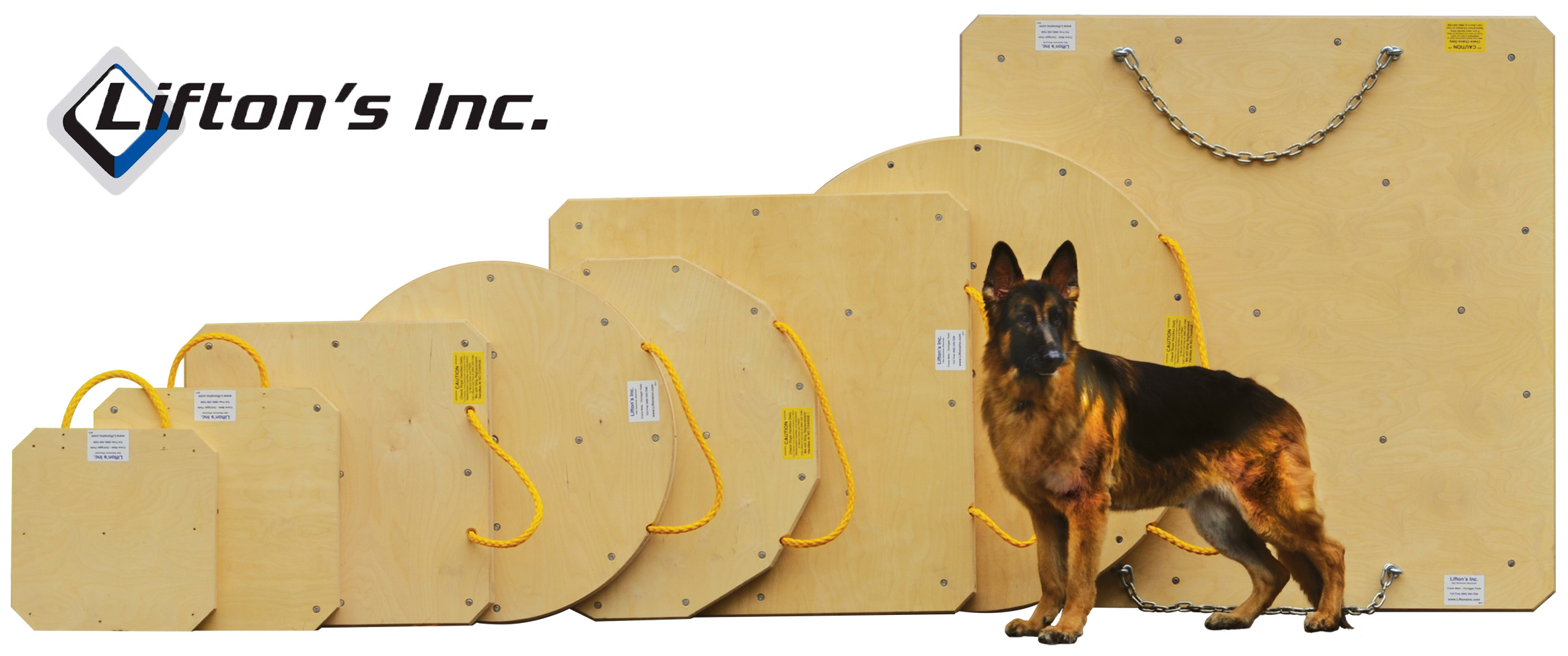| Todd | 11-18-2009 | comment profile send pm notify |
|
Robert Edwards c2009 Recently on concretepumping.com, I saw a photograph of somebody setting roof trusses with the boom of their truckâ€mounted concrete pump. There were several comments addressing the issue underneath the photo, mostly expressing disdain for the practice. After some days, the person who was running the boom in the photograph defended the practice with strong language and listed several reasons why he believed it was an okay thing to do. As a concrete pump safety professional, I was concerned that younger operators would see the discussion and conclude that this was a gray area, not a hardâ€andâ€fast rule. I asked Todd to remove the discussion until I could find the time to address the issue formally. I am doing that now. To begin, let me clarify the rule for the younger operators who are not sure about the practice of using your placing boom as a crane (quoting the Safety Manual, version 6.0.1): 8.16 WARNING! Do not use the boom as a hoist or crane! That’s it; there is no other statement in the manual. There is an illustration of a guy lifting an object with his boom, and a big red X over the top of the object being lifted. It’s easy to remember. It doesn’t say: “Unless you really need the money, do not use the boom as a hoist or crane!†It doesn’t say not to do it unless you don’t have any pumping work, or unless you found a good way to rig the straps, or unless the items aren’t that heavy. It just says ‘do not.’ Now that the rule has been clarified, let’s get into the ‘why not?’ of this rule. I cannot deny that the gentleman who was doing the work in the photograph made some good points. Why, then, does this rule exist with no exceptions? The answer is—because of these points: 1. Concrete pump placing boom manufacturers forbid the practice. The tipping point of the machine, the size and spacing of the outriggers, the size of the foot and pads, the settings of the relief valves on the holding valves of the boom, and many other parts of the machine are calculated with known loads as a constant. Any use of a placing boom for lifting variable loads may cause cracking, bending, tipping, and deformation of components, not to mention voiding your warranty. 2. Rigging cannot be made correctly. There’s no freeâ€turning swivel on a hook that would allow the load to be turned into position for placement; in fact, there’s no place to safely attach the cables or straps. 3. Freely suspended loads require a load chart that tells you how much you could safely lift in each boom position. The chart is required by the crane standards, and, because a concrete pump placing boom is NOT a crane, doesn’t exist for them. 4. Use of an articulating boom as a crane requires that the crane be manufactured, tested, maintained, and operated according to the requirements of the American National Standard ASME B30.22. Concrete pump placing booms do not comply. 5. Variable loads are beyond the intended use of the boom. If a boom were designed to lift variableâ€weight items, then the maximum weight it can lift, where to attach the rigging, how far you can extend the boom with load attached, etc, would be calculated and documented in the operating instructions. Concrete pump placing booms do not have those items documented because it was never even considered in the design phase. 6. Overloading is inevitable. Many of the new, longer booms don’t have 125 mm pipelines, and therefore are not allowed to hold up as much weight as the older, shorter booms. A placing boom equipped with 4â€inch (100 mm) pipe is only allowed to hold 215 pounds (just under 100 kilos). If you attach rigging, hooks, and straps, then lift a 250â€pound truss with thatâ€size boom, you’re already overloading. Booms equipped with 125 mm pipeline are normally allowed to carry 376 pounds (about 171 kilos). Even then, a 250†pound truss will overload the boom if it catches on something, or a worker steadies himself by pushing on it. A boom could crack or a tipâ€over could result from somebody ‘riding’ the load to keep from falling, even if that person is just average sized. The fact that the load can’t swivel makes that accident more likely. 7. Your attachment point wears out with each stroke of the pump. Assuming you string a choker strap over the last elbow before the swivel clamp (which is the only ‘can’t slip off there’ place to attach it), how do you know the elbow is mechanically sound enough to carry the sideways forces it was never designed to hold? It may have been strong enough the first day it was installed, but how about after 20,000 cubic yards have been pumped? If you’ve spoiled the contractor for the first three months of the elbow’s life, would you then have the guts to tell him that you can’t help him today because you think the elbow’s worn out? That statement would probably get you kicked off the job. 8. The clamp is not designed for mechanical forces in any direction other than circumferential (around the weldâ€on end of a pipe and/or elbow). Disregarding the design criteria of the clamp may cause the bolts to fail, and the lip that holds the pipes together to crack. If the clamp cracks, it could fail while you’re moving a suspended load, or the next time you pressurize the pipe with concrete. 9. The damage may appear long after you’ve stopped abusing the equipment. If you overload the boom, or cause cracking in the lip of the clamp, or overstress the clamp bolts, or bend the pipe arm, the damage may not show up for weeks or months. The crack has started, but it takes the recurring forces of normal pumping to cause the catastrophic failure to occur. Then, as the boom is lying on the ground and the ambulance arrives to help the injured, you think, “That just broke out of the blue. I wasn’t doing anything out of the ordinary.†In that case, you’re wrong. At that moment, you’re just harvesting the seeds you planted in the past. I may have missed or forgotten other points, but there is enough information here for you to understand why there are warnings about it. Warnings about using the boom as a hoist or crane exist in the Safety Manual, in the ACPA videos, in the Certification Study Guide, in the certification test, in the Operator Training Program, and probably in the operation manual of the machine. In addition, there should be a warning label about it on each machine. The best way to handle a request to use your boom as a crane is to show them the warning label on the machine and say “no can do.†If somebody else is willing to do it, let them. Killing people on a job site isn’t worth the money you could possibly get from the job. |
||
| Todd | 11-18-2009 | reply profile send pm notify |
|
I personally would like to thank Rob Edwards for his hard work and commitment to this industry. Very Good Job Rob. |
||
| pumpjockey | 11-18-2009 | reply profile send pm notify |
|
Ihank you for addressing this, Rob. This spells it out very clearly. I am going to print it out and put it in my pump's manual, should i ever have the request made to me. |
||
| Boom Inspector | 11-19-2009 | reply profile send pm notify |
|
Very good job Mr. Edwards,Ive made copies and will as the need arrises pass this along to my customers who ever question the validity of a boom being used as a crane. If anyone ever seen what the inside of there boom looked like during a boom section they would not have a hard time understanding that these booms are very light duty and are designed with only one function and that is to hold the pipe and concrete and nothing more. thanks again Mr. Edwards on putting this in writing |
||
| Many | 11-19-2009 | reply profile send pm notify |
|
A very candid response,which needed to be adressed. I wished everyone really could see how a boom is constructed,this would include turret as well.Perhaps this would be something the acpa mat wish to address in there seminares,boom constuction.Boom inspector,perhaps you have pic's of major cracking,even the manufacturers.I have seen some really crazy stuff,one can't say when it will happen. Good Topic |
||
| murf | 11-19-2009 | reply profile send pm notify |
|
10. Your insurance is null and void when using a vehicle for any purpose other than that what it was designed or built for. |
||
| mtnpumper | 11-19-2009 | reply profile send pm notify |
|
Interesting, There is a Hospital job going on in a town close to me. The concrete contractor that got the job has his own pumps {Big Bummer} I was talking to a cement truck driver about how it was going and he had a interesting story, the pump which looks to be 40 m or bigger is doing caissons
with a 60 ft trimmy pipe. There was some sort of failure and the tip and pipe came down missing evryone. Possibly between 3&4. They had to fold the pump with a crane. Which brings up the question, Most pumpers have used a trimmy pipe, some all the time yet some one pics a truss and it brings attention to all. What do you do in this situation? |
||
| Pump N00b | 11-19-2009 | reply profile send pm notify |
|
I calculate the weight of the 5" tiphose, 3-4 depending on pump make and size, and if I have to use a tremmy I put on a smaller diameter and longer hose that weigh the same. |
||
| biged | 11-20-2009 | reply profile send pm notify |
|
Has anybody ever thought of taking the third section elbow loose and just use three sections, like the fellow that had a 60 foot tremmie hose attached to to last section which is very light weight if three sections were long enough this would carry the weight for this appication this should be run by the pump builder. On cassions your can't let the concrete free fall much over 5 ft. |
||
| Many | 11-20-2009 | reply profile send pm notify |
|
Both Putz and Schwing offer a stub section off the 3rd section for those requirments.Somewhere not long ago there was a pic posted on this application.I believe it was a member with bbcp in the northwest doing a bridge collum.Also they can do as you mention for heavyweight concrete,per manufacturer spec's.I haven't found a pic of how the booms are constructed yet. |
||
| Mr. Ed | 11-20-2009 | reply profile send pm notify |
|
Hi guys. There is a post on here about tremmie pipes. Yes, they are, in most cases, way too heavy to be hung by a boom. When Schwing was asked to engineer one for a guy who had years of tremmie work booked for a boom pump, they made the tip section much shorter plus (and this is very important!) they used a much heavier-duty clamp and elbow for holding up the tremmie. The flanges on a regular clamp are NOT made for holding massive weight. It's not a bunch of money to do it right, and most manufacturers would let you use the section before the tip to hang pipes from, you just need to get the correct clamps and elbows to support the weight. Call the engineering department of your pump manufacturer. ConForms was very helpful when Schwing did it for that customer. |
||
| getRdone | 11-20-2009 | reply profile send pm notify |
|
An impressive display of thinking. Its nice to see people take their CAREER seriously. You and I could have some good conversations. Ill pump next to you anytime oh wise one. |
||
| Drew AUS | 11-22-2009 | reply profile send pm notify |
|
Very nicely put Rob ! |
||
| pumpking | 11-25-2009 | reply profile send pm notify |
|
Compare the shape and size of a concrete pumps boom to that of a crane's boom. A crane's boom is designed to carry a load at its tip. The cross section of the boom is nearly consistent throughout the length of the boom. A concrete pumps boom is designed to carry a load (the concrete) throughout its entire length. Since the concrete load decreases as you move towards the tip end of the boom the cross section changes throughout the entire length of the boom (as you move towards the boom tip the cross section becomes smaller). Based on a 5" inside pipe diameter, the last 5' of boom is designed to carry only 102 pounds of concrete. Attempting to hoist any load from the tip of a concrete pumps boom is going to overload and damage the boom or its components. As stated by others this damage may not be noticeable for some time. |
||
| Secret Squirrell | 11-30-2009 | reply profile send pm notify |
|
T Y Todd I just wonder how many operators have studied there manuals and specs? |
||
| pumper chuck | 12-06-2009 | reply profile send pm notify |
|
pumps- pump the WORLD. need a lift get a crain..nuf said |
||
| mtnpumper | 12-07-2009 | reply profile send pm notify |
|
Update, that company brought in a bigger pump, still lifting the trimmy pipe solo, guess they didn't learn or no better |
||




















.jpg)
.gif)

.jpg)









.jpg)








